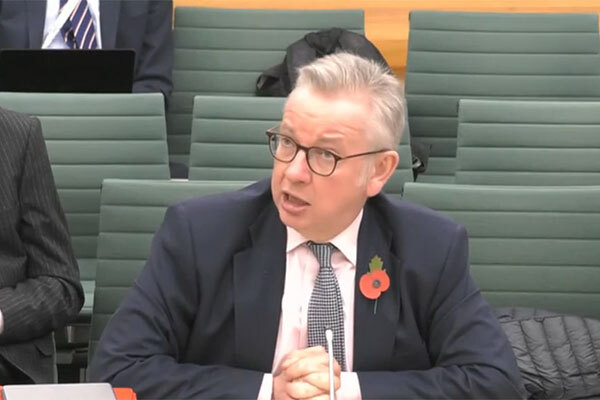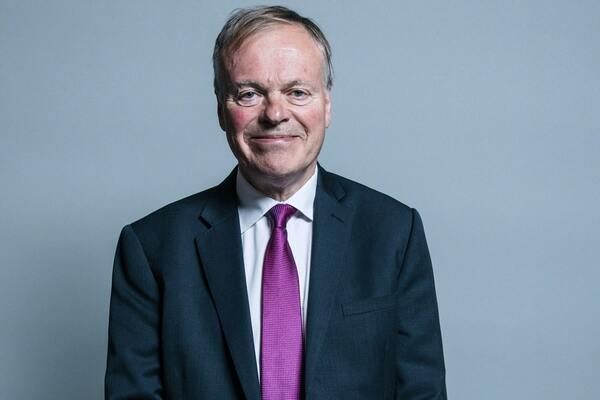You are viewing 1 of your 1 free articles
Government loan plan for leaseholders in dangerous buildings to be paused, Gove tells MPs
A government plan to provide leaseholders living in dangerous buildings with loans is to be paused, with the new housing secretary promising to look at alternative ways of protecting residents from escalating remediation costs.
The new housing secretary Michael Gove told a Housing, Communities and Local Government (HCLG) Select Committee meeting yesterday that he intends to pause the scheme first mooted by Robert Jenrick in February, as a way of softening the cost of financial burden of leaseholders facing bills.
The scheme would see leaseholders offered long-term, low-interest loans to remove combustible cladding from buildings between 11 metres and 18 metres tall. The costs of paying back these loans would be included in leaseholders’ service charges and be limited to £50 a month.
However, Mr Gove said that he was disturbed by the principle of leaseholders having to pay anything and said he would be keen to pause the idea and take a step back to look to see if there were alternatives.
He said: “No matter how helpful a system like this might be in helping [leaseholders] with their costs, or not hitting them too hard at one time, my part of the question is: why do they have to pay at all?”
He added that he may come back to the committee and say he has tried to look at other systems and could not come up with a solution, but he said that he wants to get to a position where he can explain why this would be the best route forward.
In what was his first appearance in front of the HCLG Committee, Mr Gove made a number of announcements that were welcomed by leaseholders.
He promised to remove the government’s controversial ‘consolidated advice note’, which has been a major contributor to the slowdown in the flat sale market over the past 18 months. The note states that all buildings, regardless of height, should be checked for combustible cladding, and that this cladding should be removed if found.
This has led to banks calling for ‘External Wall System 1’ (EWS1) fire safety checks on buildings below 18 metres tall. Many leaseholders have been unable to secure these checks, meaning they are trapped in their flats and are unable to sell them.
In July, Mr Jenrick revealed that the consolidated advice note would be removed within weeks.
When asked when the note would be removed, Mr Gove said: “I want to do that before Christmas, because we know that the Building Safety Bill will be in its report stage, so I would like to do it before then.”
Several of the country’s largest banks have said that they would only change their policies on requesting an EWS1 form when the government had removed the consolidated advice note.
However, despite this being a step forward for leaseholders, banks have also stated that they require the Royal Institution of Chartered Surveyors (RICS) to change its guidance on EWS1 – a process that could take months.
It appears that it is Mr Gove’s intention to align government advice with a more risk-based approach to buildings and look at other ways to make buildings safe than remediation.
When asked about the government’s approach to remediation, he said: “It is the case, and I am trying to assess this, that with small buildings which have other fire risks that are not negligible, but we need to look at what is the best way of mitigating them.
“Part of the question in my mind is when looking at containment elsewhere, what steps or intervention do we need to take to reduce the risk overall?”
Elsewhere, when asked who he felt was most responsible for the building safety crisis, he stated that while he admitted that local government, in assessing compliance through building control, and the government, through a lack of action after the Lakanal House fire, were partly responsible for the issues, the private sector should take the most responsibility.
He said: “You can say the sheriff, or sheriffs, might not have been on the ball but the cowboys were behaving like cowboys in an unregulated way.”
Mr Gove was also asked about the Social Housing White Paper, which was released last autumn, and when the changes put forward in this document would be implemented.
He said that this would be done as soon as the department possibly could, but he would not be pushed for a more specific time.
On planning, he indicated that a whole host of planning reforms put forward in the Planning White Paper last August would be reviewed, and that this would take into account “a lot more different aspects on housing” before a new solution was found.
What else did Michael Gove say?
Fire safety costs and leaseholders: Mr Gove said that the ‘caveat emptor’ idea is “rubbish” and that leaseholders are facing “grossly disproportionate” costs. He added that he “always felt the balance between leaseholders and freeholders” was wrong.
Housing associations’ cladding costs: He said he appreciates that it was a “Sophie’s choice” for social landlords around fire remediation costs and development, but this should ease slightly when taking into account the new approach to risk in buildings under 18 metres tall.
Housing First: Mr Gove indicated that his belief had changed since joining the Department for Levelling Up, Housing and Communities (DLUHC), saying he had initially believed that rough sleeping was not a result of housing but of catastrophic life events, and that people found themselves on the streets because of “emphatic unhappiness” due to finances or mental health. He has now expressed his support for initiatives such as Housing First that give people homes as a first port of call. He said that the DLUHC should support these after the pilots have concluded.
The need for social housing: Mr Gove said that there is a need for housing of all tenures and that he is supportive of social housing. He said that social housing is needed to give people the opportunity to live in quality homes and have security of tenure. He added that the people living in these homes are not as reliant on housing benefit.
No Recourse to Public Funds: Mr Gove said that while the government needs to show compassion towards everyone, the taxpayer would expect the government to be vigilant in not giving access to funds to those who enter the country illegally.
Sign up for our fire safety newsletter
Already have an account? Click here to manage your newsletters












